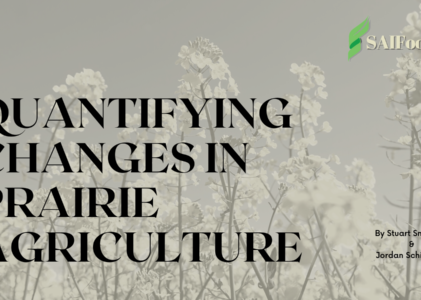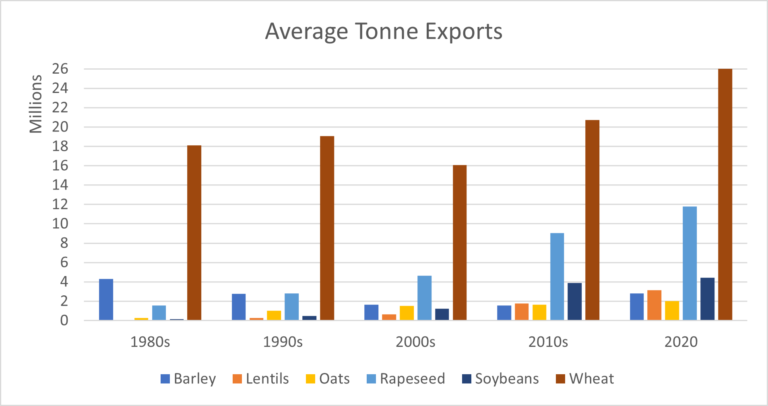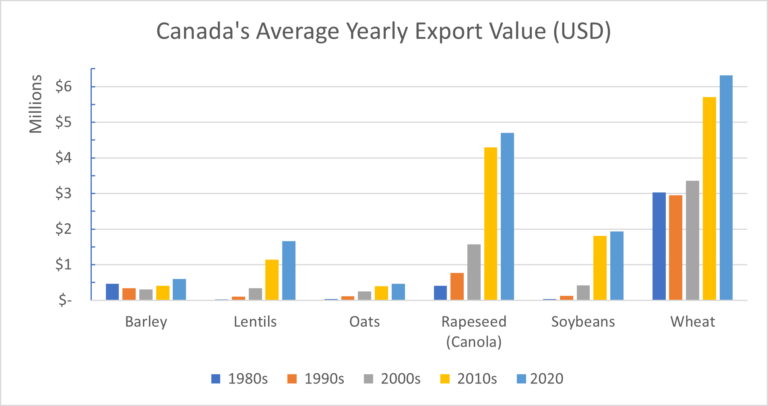By: Stuart Smyth & Jordan Schiewe
Opportunity to participate in USASK grad student research
The impacts of innovation can often be easy to observe but challenging to quantify. For instance, communication technology innovations, such as cell phones, Wi-Fi, and texting, have dramatically improved our ability to be in contact with friends and family, as well as perusing social media, the stock market, and even transfer funds with a simple tap. Without a doubt, this has improved our lives, but how would you quantify these changes in communication? Perhaps your data plan may be higher than the cost of your previous landline phone bill, so this may not be the best option. You can contact someone immediately, no matter their location, but how would we value this? Perhaps you use your cell to order a sales item from your phone online, rather than going to purchase it in the store, so the value could be measured in the money saved, but what about the time you save? It’s challenging to think about how to best quantify innovations like this. The same applies to innovations in agriculture.
Seeing the innovation
Anyone who has driven through or flown over, the Canadian prairies during the summer in the past decades, will likely have noticed the impact of innovation in plant breeding as bright yellow fields of flowering canola dominate the landscape. In the past 40 years, farmers in Saskatchewan have removed over 15 million acres of land in summerfallow, which is now in continuous crop production (innovations to canola helped in replacing summerfallow). We saw Saskatchewan transition from 48% of its productive land being underutilized as summerfallow in the 1980s, to 1% today. This is a transformative innovation, but how to best value this?
One simple way is to examine the changes in the total value of crop production. This provides an excellent example of how innovation has provided economic benefits. More challenging is how to best measure the environmental benefits from innovation. Better measurement and quantification of the environmental benefits of agricultural innovations over the past 30 years are the objective of current University of Saskatchewan graduate student Jordan Schiewe.
Jordan Schiewe
First off, I would like to introduce myself, as Stuart mentioned, my name is Jordan Schiewe (sounds like shoe-e). I am in my second year of graduate studies in the College of Agriculture and Bioresources, under the supervision of Dr. Smyth. My passion for agriculture can be traced back before I can even remember. I grew up on my family farm, a grain operation near Edmonton, Alberta. My family has been farming our original home quarter section of land for more than 112 years. The innovation that has transpired on our farm throughout those 112 years is mindboggling to think about. First being cleared and farmed by hand, to having aid from the help of horses pulling plows, to the first combustion engine tractors that would break your spine if you hit a rut, and now to where we are today. Highly efficient and powerful machinery to help keep up the demand for food for the ever-growing population. Innovation can also be seen in agriculture technologies up and down the entirety of the agriculture industry. All the way from the seed in the ground, to how food is transported to your local grocery store.
Quantifying innovation and the environmental impact
As Stuart mentioned, measuring innovation is often quantified to a monetary value to see the economic benefits it has. With greater concerns for environmental policy from leaders around the world, environmental impacts are becoming a large focus in many policy discussions. In 2015, Canada committed to reducing its greenhouse gas emissions 30% below its 2005 levels by 2030, in the Paris Accord. Looking at the agriculture industry, how can we quantify the environmental impacts it has had and how can we improve going forward to meet our climate goals? While there are a lot of pieces to that question, I am hoping that my research can help provide some insights on it.
My research is attempting to quantify the change in carbon sequestration and greenhouse gas emissions over the past 30 years in Western Canada. Looking back over this period specifically, we can hope to see how land management practices have impacted the environment. Land management practices have changed significantly over this period due to a variety of factors. However, one major innovative technology, genetically modified (GM) crops is a key driver for this change. Chelsea Sutherland, part of Dr. Smyth’s team and former grad student saw this in a recent article she published. Her results saw that change in land management practices since the adoption of GM canola in Saskatchewan has transitioned farmland from being a net carbon emitter to being a net carbon sequestered over the past 30 years. My research is expanding on her topic of correlating the adoption of genetically modified crops and land management practices to increase carbon sequestration, o further include Alberta and Manitoba to capture a Prairie-wide assessment of how agriculture innovations have allowed farmers to be more environmentally sustainable.
Needing the voices of Prairie producers
This is where we need your participation and the expertise of Prairie producers. To quantify the environmental benefits these farming practices bring, we need to collect farm-level data to see the changes. We are calling for producers of all cash crops from Alberta, Saskatchewan, and Manitoba to register and complete our Crop Rotation Survey. It is with your help, we can quantify and communicate to policymakers, consumers, and other industries the environmental impact crop producers are adopting on their own and helping the nation to meet its national climate goal.
Our survey covers a farm’s entire growing season from fertilizer rates, crop rotations, implements used, spraying applications, etc, to cover all factors of innovation and environmental impact. We are gathering data from two different periods from 1991-1994 and 2016-2019, so if you have farmer one of these seasons or both, we are happy to have you register for the survey. Having data from both periods of production allows us to compare farming practices before the adoption of genetically modified crops, zero-till, and the advancements of in-crop chemicals, to the innovation of today’s modern farming. If anyone is interested in helping quantify the changes in carbon sequestration and greenhouse gas emissions over the past 30 years in the Canadian Prairies, please register for the Crop Rotation Survey by clicking the button below or going to the URL: https://www.surveymonkey.ca/r/CRSPrairieRegistration2021.
Like Jordan, Chelsea also needed the support of Saskatchewan crop producers to complete her research survey. Your contributions to Jordan’s survey can help to quantify the innovations and environmental impact across the Prairies and help to carry out research similar to Chelsea’s. See the link below for more details about Chelsea’s research results.
Sutherland, Chelsea, Stuart J, Smyth, and Savannah Gleim. 2021. “Correlating Genetically Modified Crops, Glyphosate Use.” Sustainability 13 (11679): 1-15. DOI: https://doi.org/10.3390/su132111679.





